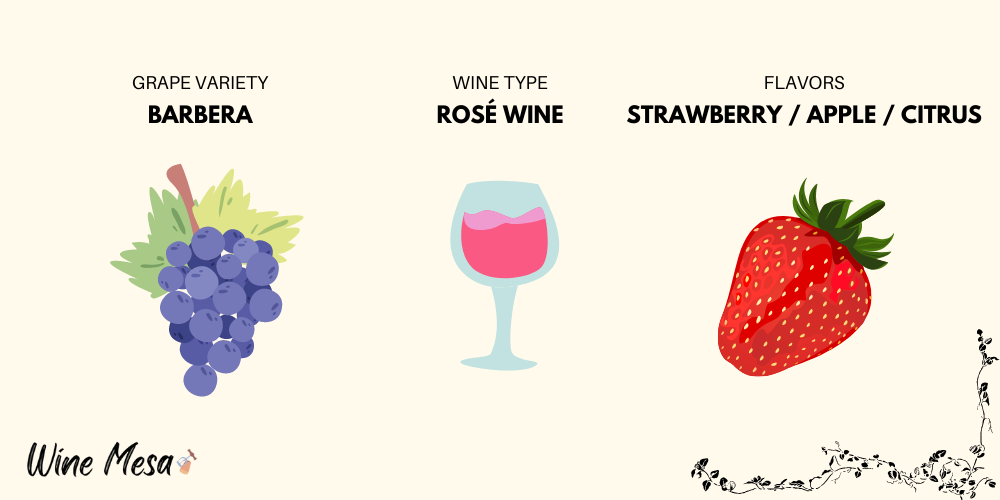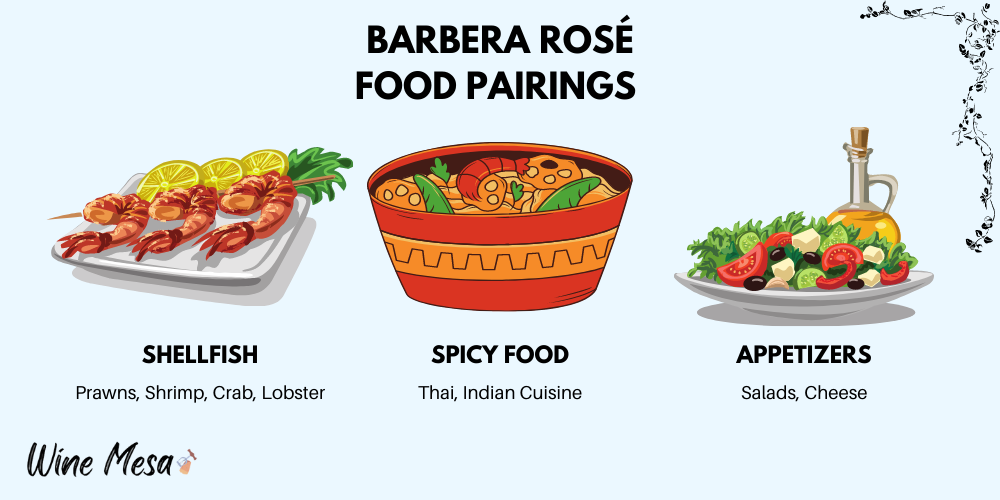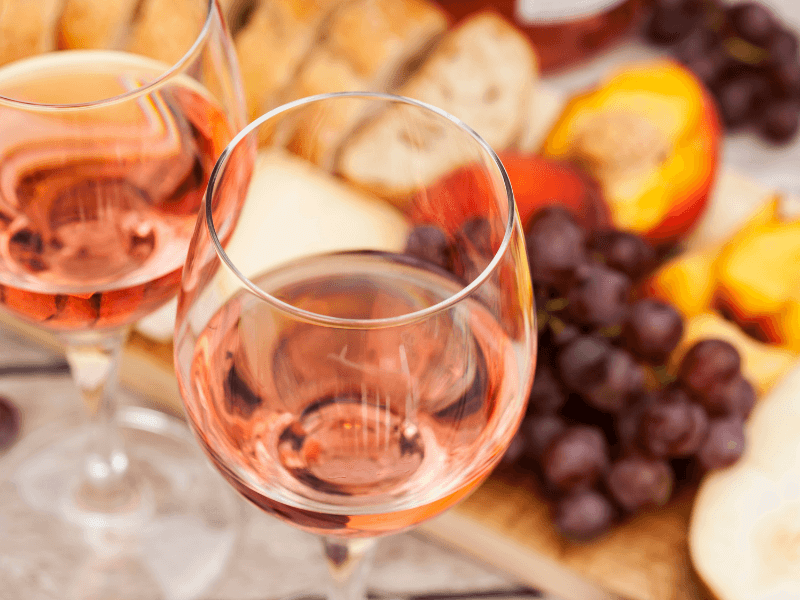There’s a lot of wine jargon out there, and if you’re not familiar with all the different types, it can be overwhelming. One variety you should add to your repertoire is Barbera rosé.
This light and refreshing wine is perfect for summer sipping, and it’s easy to find at most liquor stores.
Barbera rosé is a delicious way to cool down on a hot day with its bright berry flavours and slight effervescence. So why not give it a try? You may fall in love with this versatile wine.

What Does Barbera Rosé Taste Like?
Most people describe the flavour of Barbera rosé as pleasant and fruity, like strawberries or raspberries, but with an additional hint of tartness that resembles pomegranates.
The overall impression is fresh and crisp to the palate. Some examples might be slightly earthy or herbal-tasting due to its grown conditions, which can also give it a zestier character than other wines – at least when compared to those produced in warmer climates.
The texture and weight range from medium-light to medium-full depending on what grapes are used, how much oak ageing there has been, and what regions of Italy it was made in.
Best Barbera Rosé Examples
Somos Barbera Rosé – This wine has a slight taste of cinnamon, a bit of smokiness, and a little creaminess from the oak ageing process. The texture is medium-light with notes of apples and pears on top of a light to medium body.
It’s elegant and smooth without being too sweet or heavy – there isn’t much noticeable tartness or acidity here. Still, overall it tastes more acidic than sweet even though the sugars are relatively high.
It pairs well with creamy cheeses like brie, chicken dishes with cream sauce, risotto carbonara, salmon, arugula, and white meats like pork or veal.
Tabor Adama Barbera Rosé – This wine is full of flavours like raspberries, strawberries, pomegranate, cranberry, and dark cherry with some hints of oregano. It’s medium-light with a pleasant texture smooth on the palate but not too heavy or overwhelming either.
There are some rustic notes here, so it may be more interesting to pair with dishes like mushroom risotto, grass-fed beef burgers, savoury sausages, prosciutto-wrapped trout fillets, or lobster – or drink on its own—scents of red fruits with floral aromas complemented by herbal undertones that rise from the glass.
Rucksack Barbera Rosé – The aroma is strawberry-like with notes of cranberry or raspberry. The flavour is tart with medium tannins. This wine pairs well with fruit-based desserts like tiramisu or ice cream.
The wine is a loyal reflection of the sun-drenched hillsides the grapes were grown on, with aromas filled with cassis and strawberry fruit notes.
Cascade Cliffs Barbera Rosé – Notes of red apple, pear, and plum appear at first sip, followed by flavours of strawberry and raspberry. This wine pairs well with salads, protein dishes like pork tenderloin, side dishes like cornbread muffins, and desserts like tiramisu.
“Offers notes of ripe blackberry mixed in with hints of chocolate-covered espresso beans. There’s also a hint of sagebrush to be found among this wine’s intoxicating bouquet.
Adir Barbera Rosé – The light hue makes this rosé seem delicate before you take your first sip. You’ll find cherry cola or watermelon flavours at first sip, followed by apple or pear flavours on the palate.
Notes of sweet red berries mix with spicy white pepper for an enticing nose. The palate echoes the nose flavours with plenty of raspberries, dark cherry, fresh figs, lavender, clove spice and savoury bread crust.
What Food Pairs with Barbera Rosé?

Most enjoy drinking this at the dinner table with appetizers like prosciutto-wrapped figs, goat cheese & raspberry crostini, or salad rolls with shrimp or chicken.
However, it can also work with lighter main courses like seafood pasta, roasted pork belly, or tilapia stuffed with crab meat.
Is Barbera Rosé Sweet or Dry?
Barbera rosé is a slightly sweet wine – at least when compared to other dry wines. It ranges from about 1-14% residual sugar, and a lot of that depends on where it’s made and what grapes are used for production.
While Barbera does have a bit of spiciness, the tartness from acidity gives this its refreshing quality which helps balance out the sugar.
How is Barbera Rosé Made?
This wine is made from the Barbera grape, also used to make red wines like Barolo and Barbaresco.
It’s a popular grape throughout Piedmont and other regions in Italy (like Sardinia, where it’s called “Pramollo”).
The grapes are fermented for just a short period and then cold-stored, so there isn’t much residual sugar left after fermentation – this helps keep the tartness up even though it’s still considered a rosé wine technically.
Barbera is also known for producing wines with high acidity, so the grapes are often harvested several weeks after other red grapes – this gives them more time to develop sugar while still maintaining some of the tartness they would lose if picked at peak ripeness.
This wine is made by macerating the juice with the skins of the grapes but only for a short period (typically just 1 or 2 days) before fermentation, which helps produce its colour and brings out the fruit flavours in the wine.
The resulting wine has crisp notes on top of an earthy base that makes it very versatile on its own or for food pairing.
Summary
When you’re ready to escape the frigid cold, take a break from work or need a wine that can satisfy both your taste buds and mood, consider Barbera Rosé.
Grab a bottle of this delight today to make sure you’re not stuck drinking ice water all season long.
